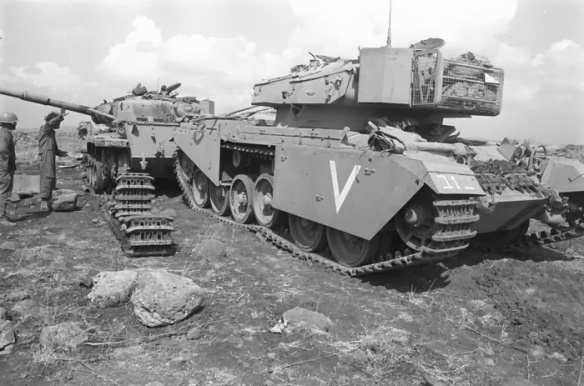The Golan Heights, the mountainous area east of the Sea of Galilee adjoining Mt. Hermon, links Israel, Jordan, Lebanon, and Syria. Roughly 65 kilometers (40 miles) long and 25 kilometers (15 miles) wide, the area is sparsely populated. This sovereign Syrian territory is about 48 kilometers (30 miles) west of Damascus and overlooks the Damascus–Beirut highway. The plateau initially gave a strategic advantage to Syria, enabling it to shell Israeli villages along the Sea of Galilee.
During its negotiations with France demarcating the Palestine–Syria boundaries, Great Britain aspired to include parts of the Golan Heights within the Palestine Mandate, and an agreement to this effect was signed in December 1920 only to be renounced by the British in 1922. A small area on the Heights formed the demilitarized zone under the armistice agreement of 1949 following the Arab–Israeli War of 1947–1948. During the June War of 1967, Israel captured this Syrian territory and placed it under military administration along with other territories captured during the war. During the October War of 1973, Israel repulsed Syrian efforts to regain control over the Golan Heights and captured some additional territory, but under the Israel–Syria Disengagement of Forces Agreement of 1974, Israel returned this newly captured area.
On October 6, 1973—Yom Kippur, the holiest day of the Jewish year—a surprise attack came on two fronts. Egypt rapidly crossed the Suez Canal and overran the Bar- Lev defensive line. Simultaneously, Syrian forces advanced into the Golan Heights and very nearly reached the 1967 border with Israel. The situation looked desperate for Israel, which, in the north, was outnumbered by nearly 12 to one. On this front Israeli counterattacks during the first few days of the war repeatedly failed, and at a high cost, especially in aircraft (the Israelis lost 150 planes).
The Syrians, however, stopped before they had reached their obvious target, the bridges across the River Jordan. In addition, they froze in a very vulnerable position in the middle of their movement, with long stretched flanks and without making any preparation to regroup for a defensive battle. Thus, while the Egyptian pause was part two of the pre-planned operation, the Syrian pause was an interruption of stage I of an ongoing operation. The final reasons are still subject to guessing and suggestions, as is stage II, i.e. the final objectives of the Syrian advance: Just reach the Jordan Valley line to seal off the Golan against an Israel counter strike or to cross the bridges into Israeli mainland, threatening major populations centres there?
Then Syrians planned on retaking the whole Golan area as a minimum. That sector has littler strategic depth, so they actually had a chance of doing so. Their advance halted not as a deliberate action but because the Israelis stopped the advance with a fierce defense, aided by the timely arrival of reinforcements.
However, on October 10 Israeli forces began to make significant headway against the Syrians, who were pushed back. Israeli troops kept advancing, invading Syria itself. This prompted the Soviet Union to airlift matériel to Damascus and Cairo. To counter this, the United States airlifted supplies to Israel on October 12 and 13.
On the Golan Heights, Syria deployed five divisions and three armored/ mechanized brigades. Their 1,600 tanks included T-34s, T- 54s, and the latest T-62 Soviet tanks. To break through the thick Israeli minefields and defenses, the Syrians also utilized specialized armor vehicles such as flail tanks, bridge-layers, and engineer tanks. Antiaircraft missiles protected the attackers against Israeli aerial intervention. The Israelis initially had only some 50 Israeli Centurion tanks of the 7th Armored Brigade to oppose the Syrian juggernaut. Following the British practice of using secondary armament for ranging purposes, the Centurions scored a high number of long-range, first-round kills. Ordered to prevent the Syrians from breaking through, the few Israeli defenders did just that. At the end of four days of savage fighting, an Israeli force totaling only 177 tanks supported by infantry and artillery defeated a far larger attacking Syrian force centered on 1,400 tanks.
